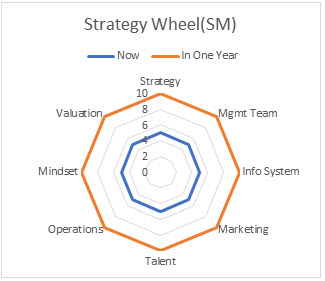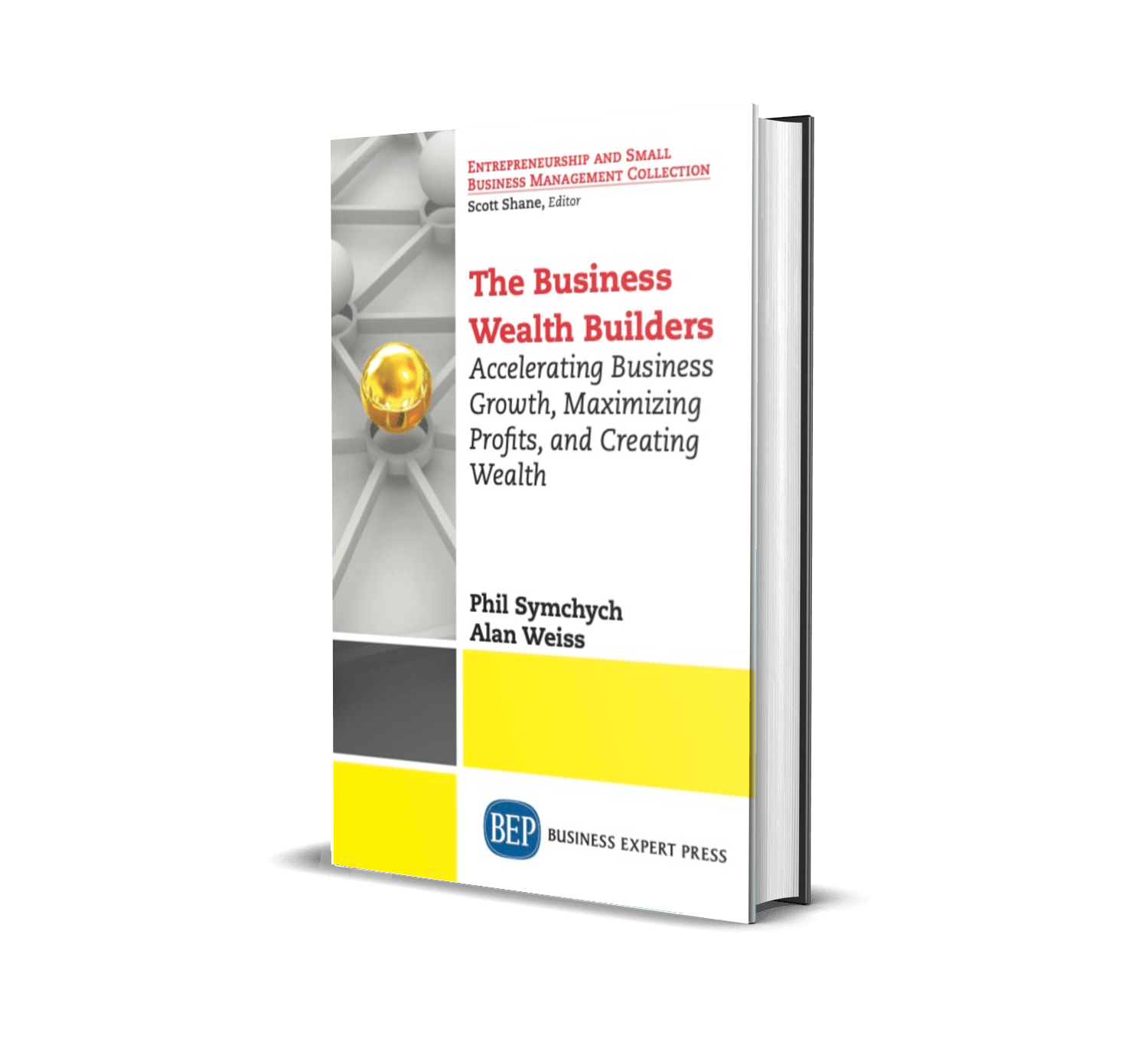Last week, we discussed going Back to School and how it was clear to everyone that you were promoted to a higher grade or year in college. This week, I want to discuss how to assess which grade you’re currently in, and how to get to the next grade using my new process called the Strategy WheelSM.
Here is a simple business matrix (below) to assess major growth factors. Look at the table and assess where your business is for each growth factor.
Notice that revenues are excluded from the growth matrix because they’re not that important to grading your business, although they are highly addictive to most entrepreneurs, and they are the lifeblood of any business. But if the other factors aren’t in place, profit is difficult to create from the revenues.
Profit…and valuation…come from having the growth factors and management team and systems in place to provide optimal value to your ideal customers.
Table 16.1 Business Growth Matrix
| Growth Factor | Middle School | High School | College |
| Strategy | Mostly reactive. A vendor to their customers. | Mix Reactive & Proactive. Have a partnership with some customers. | Mostly Proactive. Seen as an expert and strategic asset by their customers. |
| Management Team | Owner makes all decisions. | Owner delegates tasks he doesn’t like, oversees most decision making. | Managers make decisions, can spend money, can hire & fire, are held accountable and compensated for results. |
| Information Systems | Only have an accounting system. No real time operational data. | Some operating data or systems, often in excel. Main system is still accounting. | Main system is for business operations, may be linked to or separate from accounting system. |
| Marketing | Word of mouth, repeat business. | Some advertising or networking. | Specifically target and pursue your ideal customers. |
| Talent | Anyone can do the work, minimal training, often too busy to train. | Some systems developed, people are trained on tasks. Promotion is based on seniority. | All people are assessed for their natural talents and placed in positions that utilize these talents. Clear career plans in place. |
| Operations | Limited to hours and people available. | Some scalability from second shifts or overtime. | Use technology to increase speed and quality. Focus on adding value. |
| Mindset | Transaction focused. Don’t want to market because would struggle to keep up. | Quality focused. Let’s work harder to get the work done. | Relationship focused. Let’s create our ideal future for our customers and ourselves by focusing on our strengths and creating a competitive advantage. |
| Valuation | Owner has a job, not a business. Value is in assets. | Some value in customer relationships. Some recurring revenue. | Strong leadership position in industry or market. Contracts with key customers. High recurring revenue. Good growth record. |
The table above should give you some good ideas where you need to focus to grow your business and build your business wealth. The next step in the process is to use the Strategy WheelSM (yes, it’s new) to develop detailed metrics and action plans.
Introducing the Strategy WheelSM
I’ve taken these growth factors and placed them into a spider chart. I first learned of this technique from my mentor, Alan Weiss. From his model, I’ve expanded the diagram into a process where you quantify where you are now, on a scale of 1 to 10 (10 is optimal), and where you want to be in one year, also using the same scale. The Strategy WheelSM process then has discussions on priorities and results in developing metrics and action plans.
It’s a highly visual, interactive, engaging strategy development process and I call it the Strategy WheelSM. This process has worked with small, medium, and large businesses in a variety of industries. It works with front line employees, executives, and board members. It works because it pulls information from everyone and presents it visually. It engages your whole brain!
For the model, let’s assume you are now at a score of 5/10 for all factors, and you want to be a 10/10 on all factors in one year (which would never happen because everything does not have equal priority in the real world), the Strategy WheelSM would look like this:
Chart 16.1 Strategy WheelSM

From this chart, we discuss gaps, priorities, and action plans to move towards the major goals. This can be done in a day, or less, with any team.
Strategy should not be complex or intimidating. It should be clear on how you provide value and create results for your customers, how to measure those results, and then determining what you need to be really good at—the critical growth factors—to achieve your strategy. Simplifying the factors to the top two or three themes makes it easier for your team to focus and go faster.
SWOT analysis that focuses on strengths, weaknesses, opportunities, and threats, actually slows things down because there’s too much information that can get pulled in. It’s time to swat the SWOT and get rid of it.
Focus on the growth factors that will help you achieve success for your customers.

